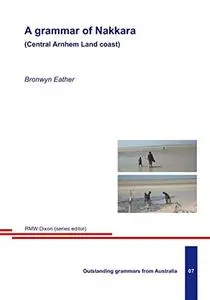Bronwyn Eather, RMW Dixon, "A Grammar of Nakkara"
English | 2011 | ASIN: B006L0XPQO | PDF | pages: 520 | 16.2 mb
English | 2011 | ASIN: B006L0XPQO | PDF | pages: 520 | 16.2 mb
Nakkara (now spelt Na-Kara) is a prefixing language of the non-Pama Nyungan variety spoken in and around the community of Maningrida in the Northern Territory of Australia. Like many coastal communities, the Na-Kara tribal area and language group seem always to have been quite small and Na-Kara is now a highly endangered language. Moderately polysynthetic, Na-Kara has a number of characteristic structural features that place it with other central and western Arnhem groupings. The phonology is relatively straightforward with five vowels; a series of short and long stop consonants; retroflex and alveolar pairs, a lamino-palatal distinction and a full set of nasal sounds. The morphology is rich and intricate springing from a pronoun system that distinguishes masculine and feminine gender across several number and person categories where an inclusive/exclusive distinction adds to the mix. Verbs carry these often complex pronominal prefixes as well as additional affixes for direction, realis/irrealis, tense and transitivity. Aspect is expressed by complex verbal predicates. Nouns are relatively unencumbered with affixes but share some of the load for locational specification. Demonstrative/deictic forms carry a quasi pronominal load often with three-way locational and referential distinctions. With a fairly modest lexicon, many forms in Na-Kara are idiomatic and descriptive, relying on compounding for semantic extension.



